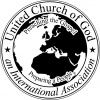Understanding the 'Image of God'

"So God created man in His own image; in the image of God He created him; male and female He created them" (Genesis 1:27).
The purpose of human life is indelibly etched into the first chapter of the first book of the Bible, where man is first mentioned: "Then God said, 'Let Us make man in Our image, according to Our likeness'" (Genesis 1:26).
God created each species of the plant and animal kingdoms "according to its [own] kind" (Genesis 1:11-12, Genesis 1:21, Genesis 1:24-25), but human beings, Genesis 1:26 essentially tells us, were patterned after the "God kind." The image of God is what makes man unique among all His physical creation. This is what renders men, women and children truly human.
Our Creator first declared His great purpose, then brought it to fruition: "So God created man in His own image; in the image of God He created him; male and female He created them" (Genesis 1:27). Genesis 1 focuses on the fundamental purpose of human life, while chapter 2 lays out important details. These two beginning chapters complement each other.
Created to rule
After initially declaring His grand design of making mankind in His own image, the Creator said, "Let them have dominion [rule] over the fish of the sea, over the birds of the air, and over the cattle, [and] over all the earth" (Genesis 1:26).
Then, after creating two human beings (male and female) in His own image, He restated His purpose and made it plain that their progeny are an integral part of this great project: "Then God blessed them, and God said to them, 'Be fruitful and multiply; fill the earth and subdue it; have dominion [again, rule] over the fish of the sea, over the birds of the air, and over every living thing that moves on the earth'" (Genesis 1:28).
God created the human family to grow and expand to the point that it would eventually populate the entire earth. Mankind's initially revealed purpose was to rule the physical creation—and, in the long run, far more than just this good green earth. God rules what He creates, and the ultimate purpose of human life involves corulership in the one divine family.
But we start small. First we learn to rule and discipline ourselves. Then we learn to cooperate with others and properly manage whatever our present circumstances have provided us.
What is the image of God?
The Bible does not define the meaning of "the image of God" in so many words. In a sense it's a mystery, yet the key mysteries and secrets of the Bible may be unlocked for those whom God calls, for He reveals to them His truth.
Jesus said, "I thank You, Father, Lord of heaven and earth, that You have hidden these things from the wise and prudent and have revealed them to babes" (Matthew 11:25). God's truth comes by revelation from Him, not from human wisdom. Yet certain commonsense principles do enable us to better understand the Bible.
As we mentioned before, we can best comprehend biblical passages when we consider them in their context. Genesis 5 mentions likeness and image of God again. As we read the opening verses, we begin to discern their broader meanings. The chapter begins: "This is the book of the genealogy of Adam. In the day that God created man, He made him in the likeness of God. He created them male and female, and blessed them and called them Mankind in the day they were created" (Genesis 5:1-2).
Humanly, the genealogy of Genesis 5 extends down through the centuries all the way from Adam to Noah and his three sons—more than 1,600 years. But it actually begins with the Creator Himself. In Luke's genealogy of Christ, which stretches back to the beginning of mankind, he refers to Adam as "the son of God" (Luke 3:38).
As Paul later explained, "we are the offspring of God" (Acts 17:29). We came forth from God, not in the same way that the land animals and sea creatures were created. They were not made in the image of God. We human beings were! In making this point clear, God emphasized the alternate term "likeness." But what does that mean?
Again, the context helps. This is perhaps the most important principle governing biblical studies and easily the most abused. Continuing the genealogy: "And Adam lived one hundred and thirty years, and begot a son in his own likeness, after his image, and named him Seth" (Genesis 5:3).
In context with John 4:1-2, what conclusions may we draw from the statement in John 4:3? It is reasonable to deduce that, although God is spirit rather than flesh (John 4:24), man bears considerable resemblance to His Maker, just as Adam's son resembled him.
How are we made in God's image?
Are men, women and children made in God's image in other ways? Consider the gift of human life itself. The Creator breathed into man's nostrils the breath of life (Genesis 2:7). The gap between the living and the nonliving is enormous.
How great is the chasm even between human and animal awareness of the world? Consider your innate capacity to imagine, to think sequentially in words and images. Man's incredible powers of imagination and abstract thinking, though often misused, are an important reflection of our being made in the image of God. Our Creator imagines, and we imagine. God said at the time of the Tower of Babel, "This they begin to do: and now nothing will be restrained from them, which they have imagined to do" (Genesis 11:6, KJV). What an incredible testimony to our human potential direct from the Creator Himself!
Language and the ability to communicate are other vital aspects of God's image. But men, women, boys and girls have this precious capacity for language in an unusual way. Adam and Eve possessed it at the time of their creation.
Writes Steven Pinker, author of The Language Instinct: "Language is no more of a cultural invention than is upright posture...Language is a magnificent ability unique to Homo Sapiens [the human species]...The complexity of languages from the scientist's point of view is part of our biological birthright" (1994, pp. 18-19).
So great was Adam's linguistic ability and mental capacity that he could name all the animals, presumably with names never conceived of before (Genesis 2:19). The theory of evolution typically pictures early man as nothing more than a crude grunter. How far from the truth of God!
Our first parents understood the principle of cause and effect—the probable consequences of present actions. Although Satan the devil in the form of the serpent imparted lethal misinformation to Eve in Genesis 3, she was well able to reason out the possible consequences of future actions. She reasoned that partaking of the fruit God had forbidden her and Adam to eat would make her wise like God and enable her to live forever.
But what Eve lacked was the moral perception to think through the implications of her actions, particularly as to how they would affect the human race, which was to spring from her and Adam.
Still in God's image?
Most of us are aware of the tragic events that began in Eden—how Adam and Eve sinned and were driven from the garden and how the wholesale transgression of God's law continued to multiply over the centuries until only one righteous man, the patriarch Noah, was left on earth.
Universal sin, we learn from the Bible, brings universal destruction. So only righteous Noah and his family were saved from the Flood by building and entering the ark according to God's instructions. Our Creator decided to start over with Noah and his progeny.
But as a safeguard to curtail man's predilection for violent behavior, God instituted capital punishment—to be administered under certain restraints that were later amplified when the law was formally codified (Genesis 9:5).
Consider the setting for this provision. After the judgment of the Flood, God renewed the human race (Genesis 9:7), and a new epoch of man's history soon commenced. At this juncture God again reminded man of the incredible legacy He had given him: "Whoever sheds man's blood, by man his blood shall be shed; for in the image of God He made man" (Genesis 9:6).
However depraved human behavior had become, God had still created men, women and children in His own image and likeness—and would in due time carry out His great plan of salvation. In God's eyes, man's redemption through the sacrifice of Jesus Christ was already as good as accomplished (see 2 Timothy 1:8-9; Romans 4:17).
Although humanity had not lived up to the glorious legacy of God's image and had fallen far short of His standards—"for all have sinned and fall short of the glory of God" (Romans 3:23)—our Creator, in His awesome mercy and love, would not be deterred from His great plan for mankind.
